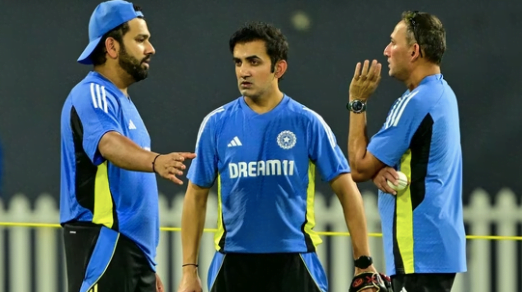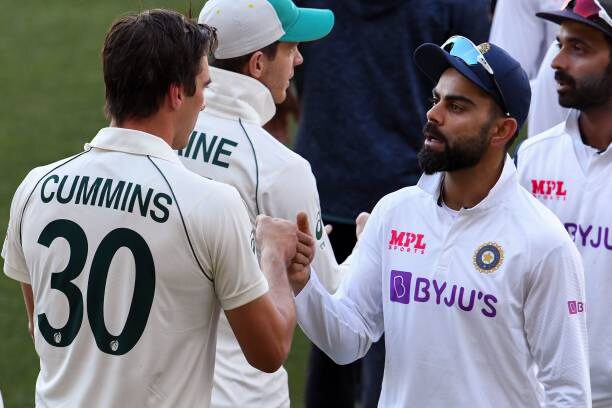
(AFP Photo)
Gautam Gambhir must discover a solution to halt India’s recurring batting collapses against top-quality spin, a troubling trend that has become all too common.
Lightning clearly has a penchant for repetition. Just last week in Pallekele, it struck three times in four nights, each instance triggering a dramatic collapse from Sri Lanka in the Twenty20 International series. Now, it’s hit the R Premadasa Stadium in Colombo twice in three nights (and possibly more), with India on the receiving end as a cherished record was brought to a halt.
In Pallekele, Sri Lanka could point to their inexperienced lineup facing the World Cup champions as a valid excuse, even though India was strong without their key bowlers, Jasprit Bumrah and Kuldeep Yadav. India, however, cannot rely on such a fallback. Their full-strength batting lineup, among the best globally, faltered again against Sri Lankan spin. After their 32-run loss in the second One-Day International on Sunday, India faces the prospect of leaving without winning a bilateral series against Sri Lanka for the first time since 1997. If they fail to level the series on Wednesday, Gautam Gambhir will have endured a defeat in his first ODI series since becoming head coach.
India’s struggles against spin are well-known and thoroughly documented. However, because they don’t encounter such challenging conditions as those at the Premadasa Stadium very often, these issues are frequently overlooked.
It is concerning that India’s collapses have occurred after they’ve established a solid foundation. On Friday, in the first game, Rohit Sharma and Shubman Gill put together a 75-run opening partnership from 76 balls, only for India to collapse from three wickets down for 12 runs to five wickets for 67. They barely managed to level the score with Sri Lanka’s 230, ending in a tie. On Sunday, the situation was even graver: starting at 97 without loss, India quickly slid to 147 for six. There was no late rally or comeback, and India was bowled out for 208, falling 32 runs short of Sri Lanka’s 240 for nine. This trend is especially troubling for Rohit Sharma.
Looking back 11 months, it’s clear that these two recent collapses are part of a troubling pattern. In last September’s Asia Cup, against the same Sri Lankan team, Rohit Sharma and Shubman Gill had quickly amassed 80 runs in just 67 balls before the first wicket fell. Despite this strong start, India was eventually bowled out for 213. Fortunately, Kuldeep Yadav and Jasprit Bumrah came to the rescue, leading India to a 41-run victory after dismantling Sri Lanka.
A recurring factor in each of these Indian batting collapses is a bowler who can only be described as a part-time off-spinner. Charith Asalanka, who now captains Sri Lanka in white-ball formats, has impressive figures of 10 wickets for 68 runs in 24.1 overs across these three matches. It’s quite puzzling.
In this series alone, Sri Lanka’s spinners – including Asalanka, Dunith Wellalage, Akila Dananjaya, Wanindu Hasaranga, and notably, Sunday’s Player of the Match Jeffrey Vandersay – have claimed 18 of the 19 wickets taken by bowlers. Vandersay, who was not part of the original squad until Hasaranga’s hamstring injury in the first ODI, overshadowed the senior leg-spinner with remarkable figures of six for 26 in his initial seven-over spell. The confusion and uncertainty displayed by India’s renowned batsmen were reminiscent of Shane Warne’s legendary spin, highlighting their struggles against the spin attack.
If there’s a silver lining, it’s that the coaching staff has recognized the issue with playing spin. Previously, inquiries about this problem were often met with thinly veiled contempt and dismissive remarks, such as “it’s just one of those things.” However, Abhishek Nayar, one of Gambhir’s assistant coaches, admitted that it’s crucial to understand why this problem has occurred twice in a row and to address it. While this acknowledgment might seem like stating the obvious, it was an important step that needed to be taken.
Outside of Sri Lanka, and perhaps Bangladesh where India lost an ODI series in December 2022, such challenging spinning tracks are unlikely to become the norm in 50-over cricket. However, this offers little comfort. For players accustomed to facing high-quality spin, continually falling prey to their own self-imposed pressure is a hard pill to swallow. It would be beneficial if the batsmen followed Nayar’s example and openly acknowledged the problem, but don’t count on it happening.
Hoping for a miracle while stuck on the crease isn’t a viable strategy on these pitches, which, to be fair, make even modest spinners appear exceptionally dangerous. India has one final chance to make a comeback. Will they rise to the occasion and deliver a decisive performance, or will they face a third consecutive defeat, similar to Sri Lanka’s performance in Pallekele?

